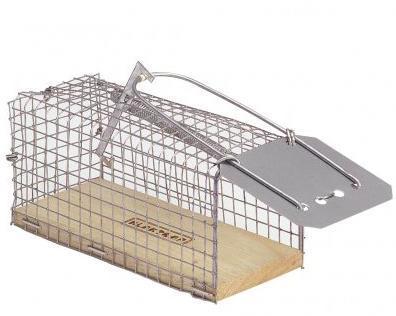
Before bringing home a pet mouse you should make sure you have a fun and interesting cage organized so that you are able to provide a comfortable and stimulating space for it to live in. Here we'll show you everything you need to know about setting up a mouse cage and arranging it in such a way that the mouse has a happy and stimulating life.
Mouse cage
If you don't already have a mouse cage, the first thing that you need to do is find a suitable living space for the animal. Luckily there is a way of calculating the space you need to accomodate the animal depending on how many mice you are going to keep.
The living space should be large enough to allow the animals to stand up. The height of a mouse on it's hind legs is about 20-25 centimeters. Ideally you should try to obtain a cage which is 50cm in height, where you can have 2 levels to make better use of the space.
On this site (Opens new window) you can find a calculator. Writing the width (Width) depth (Depth) and height (height) of your cage, this tool will tell you how many mice can have.
Remember to mark the units in centimetres (cm). When you have completed filling in all the details, calculate the number of mice (Calculate Number of Rats).
The space should allow for the mice to stand up on their hind legs too. The height of a mouse when standing is around 20-25 cm. Ideally, if you have a cage measuring 50 centimetres high, you should divide the space into two separate floors, to make the most of the space.
How many mice should I have?
Only male mice can live alone. You should have have at least 3 females so that if one happened to die, there would still be company for the remaining two!
Glass tanks do not make good mouse cages
Fish tanks and aquariums do not provide enough ventilation and it's really difficult for a mouse to climb and play. They can also cause serious health problems due to the possibility of a high accumulation of ammonia.

The mouse's hiding place
Most rodents will need to have a safe, dark enclosed space for them to retreat to, so don't forget to place a halved coconut or any other type of place in which the mouse can hide. This is a favourite spot for all rodents, and will probably double up as their bed.
Hygenic Bedding
The bedding must be safe. Avoid the following materials:
- Newspaper
- Toilet paper
- Cedar
- Pine
- Poplar
- Cat litter
Use commercial bedding, found in pet stores. Go to stores such as Pets at Home and ask for the ideal bedding.
Never use pine or cedar sawdust as bedding for your rodent. They cause serious respiratory problems.

A sleeping area for your mouse
You need to use safe material which the mouse can use to sleep in. Do not use fluffy cotton because their limbs can catch in it and could cause injury.
Cotton pods are best for mice. It is natural cotton. This allows them to busy themselves with chewing up the cotton to use it for their bedding.
A Mouse Wheel
Mice need exercise... they need a mouse-wheel. It must be sufficiently large to enable the mouse to use it without injuring itself and, likewise, it shouldn't have cracks in it in which the mouse's tail could get stuck.
It is also good to have a mouse-ball in which it could run about your house in whilst you clean its cage.
Mouse toys
Leave a piece of wood in the cage for the mouse to chew. If they don't have anything to chew, their teeth will grow and they'll need to take a visit to the vet to file them down. Don't do this yourself - always take your mouse to the vet.
Some good toys include:
- Toilet roll tubes
- Hammocks
- Rope toys
Avoid using treated wood. A good toy is a natural cotton sheath, which your rodents can chew and use to make a bed.
If you want to read similar articles to Mouse Cage Ideas: How to Set Up a Mouse Cage, we recommend you visit our Pets category.
- Hay is good for mice to chew. It aids digestion.
- Make sure you buy mouse food- as found in a pet store. It is difficult for them to drink from a water bowl: instead, purchase a bottle designed for mice to drink from, and secure to the side of the cage.